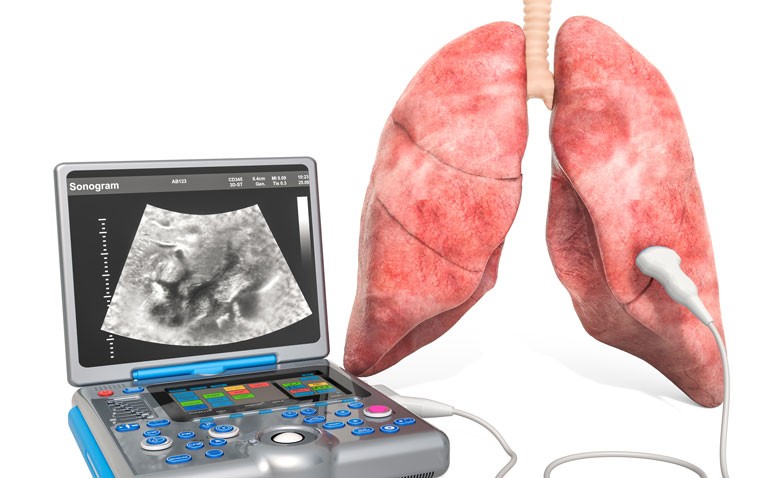A lung ultrasound severity index tool has been shown to be able to identify those with COVID-19 and predict in-hospital mortality.
Although a formal diagnosis of COVID-19 is based on a positive PCR test, it can take up to 24 hours before the result is available. Given that COVID-19 is a respiratory infection, clinicians have often turned to chest imaging with lung ultrasound, X-rays and CT scans, to diagnose the infection prior to confirmation from a PCR test. In fact, a Cochrane review has concluded that the use of a lung ultrasound correctly diagnoses COVID-19 in 86.4% of infected patients.
With the potential value of lung ultrasound as a diagnostic aid in COVID-19, an Italian team from the Department of Morphology, Surgery and Experimental Medicine, University of Ferrara, Italy, undertook a prospective, observational study to further examine the value of the imaging modality in those with suspected COVID-19. Patients were those consecutively admitted to the emergency department of a single hospital with suspected COVID-19. Each underwent a standard lung ultrasound examination which included 12 thoracic areas. The team then calculated several different measures with a view to determining whether any of these could be used prognostically for COVID-19. The scores for each thoracic areas were added to calculate a regional lung ultrasound severity score (rLUSS) and a lung ultrasound severity score (LUSS) was calculated by summing all rLUSS values. The number of different ultrasound patterns found in each area defined the regional lung ultrasound heterogeneity score (rLUHS). A regional lung ultrasound severity index (rLUSI) was then calculated as rLUSS/rLUHS for each area. Finally, the team computed a lung ultrasound severity index (LUSI), which was the sum of all the rLUSI scores. The team were interested in whether LUSI, rLUSS or LUHS. The outcomes of interest were a diagnosis of COVID-19 pneumonia and in-hospital mortality and the area under the receiver operating curves (AUROC) analysis was used to determine the relationship between LUSS, LUHS, LUSI and the severity of pneumonia.
Findings
The study included 159 patients with a mean age of 64.6 years (66% male) of whom, 49% had respiratory failure upon admission. For each of the three lung ultrasound measures (i.e., LUSS, LUHS and LUSI), in relation to the differentiation of COVID-19 positive and negative cases, LUSI offered the greatest sensitivity and specificity with an AUROC of 0.72 (95% CI 0.64 – 0.78), giving a sensitivity of 63% and a specificity of 75%. With respect to overall in-hospital mortality, again LUSI scores provided the best AUROC, at 0.81 (95% CI 0.73 – 0.86) providing a sensitivity of 90.9% and a specificity of 65.6%. Finally, when considering only COVID-19 patients, LUSI also gave the highest AUROC, 0.76 (95% CI 0.66 – 0.84) with a sensitivity of 63.1% and a specificity of 90%.
The authors concluded that their newly developed lung ultrasound severity index provided the highest accuracy with respect to COVID-19 diagnosis and prognosis. They also added that a further advantage was how the lung ultrasound could be performed in under 10 minutes, allowing LUSI scores to quickly identify patients at a higher risk of both COVID-19 and mortality and called for future studies to understand LUSI’s role for different clinical goals such as monitoring of treatment or progression.
Citation
Spampinato MD et al. Lung Ultrasound Severity Index: Development and Usefulness in Patients with Suspected SARS-Cov-2 Pneumonia. A Prospective Study. Ultrasound Med Biol 2021










